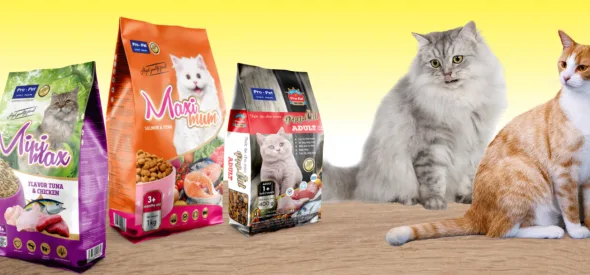Handbook
Guide to choosing dry food for cats according to age – Secrets to raising healthy cats
How to Choose the Right Dry Food for Your Cat Based on Age
By Pro-Pet VN
Dry food is a popular choice among cat owners due to its convenience and nutritional value. However, a cat’s dietary needs vary across different life stages. Choosing the wrong type of dry food can negatively impact your cat’s health. This article will help you understand how to select the right dry food based on your cat’s age so your feline friend can stay healthy and thrive!
1. Why Is It Important to Choose Dry Food Based on Age?
Cats have sensitive digestive systems, and their nutritional requirements change as they grow. Choosing the right dry food for each life stage can:
✔️ Support the full development of kittens
✔️ Maintain lean muscles and a shiny coat in adult cats
✔️ Protect the digestive system and joints of senior cats

2. Choosing Dry Food for Cats by Life Stage
🐾 Kittens (0 – 12 months): Crucial Growth Stage
Kittens have underdeveloped digestive systems and need soft, small, and easy-to-digest kibble.
Key nutrients include:
✅ Protein (30–40%) for muscle and immune development
✅ Healthy fats for energy
✅ Calcium & phosphorus for strong bones
✅ DHA, Omega-3 to support brain and vision development
🔹 Tip: When kittens begin weaning (around 4–6 weeks), soften the kibble with warm water to make it easier to eat.
🐾 Adult Cats (1 – 7 years): Balanced Nutrition Phase
At this stage, cats require a diet that maintains their overall health, weight, and digestive stability.
Key nutrients include:
✅ Protein (28–35%) to preserve lean muscle
✅ Taurine for heart and eye health
✅ Fiber & probiotics for a healthy digestive system
✅ Vitamins and minerals to strengthen immunity
🔹 Tip: If your cat shows signs of being overweight, choose high-protein, low-fat kibble to help manage weight.
🐾 Senior Cats (7+ years): Joint and Digestive Support
Older cats are more prone to joint, kidney, and digestive issues, so their diet needs to be adjusted accordingly.
Key nutrients include:
✅ Easily digestible protein (25–30%) to reduce digestive strain
✅ Low fat content to prevent weight gain
✅ Glucosamine & chondroitin for joint health
✅ L-carnitine to support energy metabolism
🔹 Tip: Older cats often have a reduced appetite, so choose kibble with a natural aroma to encourage eating.
3. Tips for Choosing the Right Dry Food
✔ Check the ingredient list – Avoid food with cornmeal, soy, or artificial colorings, which may cause allergies or digestion issues.
✔ Choose kibble size and texture appropriately – Small and soft for kittens, medium size for adults, easy-to-chew for seniors.
✔ Transition foods gradually – Mix 75% old food with 25% new food and slowly adjust over 7–10 days to avoid digestive upset.
✔ Always provide clean water – Dry food is low in moisture, so cats need enough water to prevent kidney or urinary issues.

4. FAQs About Dry Food for Cats
🔹 Can cats eat dry food for their entire lives?
👉 Not exclusively. It’s best to combine dry food with pâté, fresh meals, or supplementary soups to ensure balanced nutrition.
🔹 Can dry food cause obesity in cats?
👉 Yes, if portions are not controlled. Follow feeding guidelines on the packaging and adjust based on your cat’s activity level.
🔹 Should I choose grain-free dry food?
👉 If your cat has allergies or digestive sensitivities, grain-free food may be beneficial. However, not all cats need a grain-free diet.
Conclusion
Choosing age-appropriate dry food helps your cat grow well, stay healthy, and avoid common health issues related to digestion and joints. Always read the ingredient list, choose high-quality products, and adjust the diet to your cat’s individual needs for optimal nutrition.
Still have questions about dry food for your cat? Leave a comment below and let Pro-Pet help!

